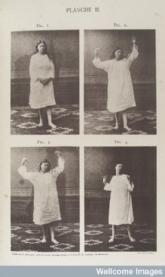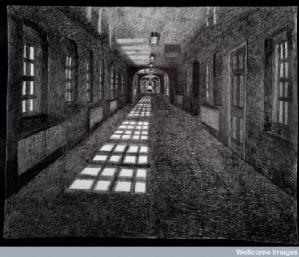Shattered Nerves
TOPIC 11 (WEEK 3): INTRODUCTION
QUESTIONS
- Why was the late 19th century a heyday for neurasthenia?
- Why did neurasthenia apparently take on different forms in the US and UK?
- Was neurasthenia a gendered disorder?
- Are neurasthenia and hysteria as much cultural as medical categories?
READING
There is also a huge literature on Gilman and The Yellow Wallpaper, around PS.1744.156 in the library. Julie Bates Dock, Charlotte Perkins Gilman’s ‘The Yellow Wallpaper’ and the History of its Publication and Reception (Pennsylvania University Press, 1998) is useful as are the essays in Bauer (ed.).
Have a look too at my short article in The Conversation on The Yellow Wallpaper.
** Janet Oppenheim, “Shattered Nerves”: Doctors, Patients, and Depression in Victorian England (New York and Oxford: Oxford University Press, 1991), esp. ch. 6 ‘Neurotic Women’. Chapter scanned (course extracts HI383) and Talis Aspire
* Mark S. Micale and Paul Lerner (eds), Traumatic Pasts: History, Psychiatry, and Trauma in the Modern Age, 1870-1930 (Cambridge University Press, 2001) (includes useful essays on trauma, hysteria and nerves). e-book
* Laura Salisbury and Andrew Shail (eds), Neurology and Modernity: A Cultural History of Nervous Systems, 1800-1950 (Basingstoke: Palgrave Macmillan, 2010). e-book
Michael Cowan, Cult of the Will: Nervousness and German Modernity (Pennsylvania University Press, 2008).
Åsa Jansson, 'Mood Disorders and the Brain: Depression, Melancholia, and the Historiography of Psychiatry', Medical History, 55 (2011), pp. 393-9 e-journal
Stanley W. Jackson, Melancholia and Depression from Hippocratic Times to Modern Times (Yale University Press, 1986).
Edward Shorter, How Everyone became Depressed : The Rise and Fall of the Nervous Breakdown (Oxford University Press, 2013).
Edward Shorter, From Paralysis to Fatigue: A History of Psychosomatic Illness (New York: Free Press, 1993).
German Berrios and Roy Porter (eds), A History of Clinical Psychiatry (London: Athlone, 1995), chs 17, 19 and 20. Multiple copies in library
Joan Jacobs Brumberg, Fasting girls: The Emergence of Anorexia Nervosa as a Modern Disease (Cambridge, Mass.: Harvard University Press, 1988).
Matthew Smith, Hyperactive: The Controversial History of ADHD (London: Reaktion , 2012). e-book


